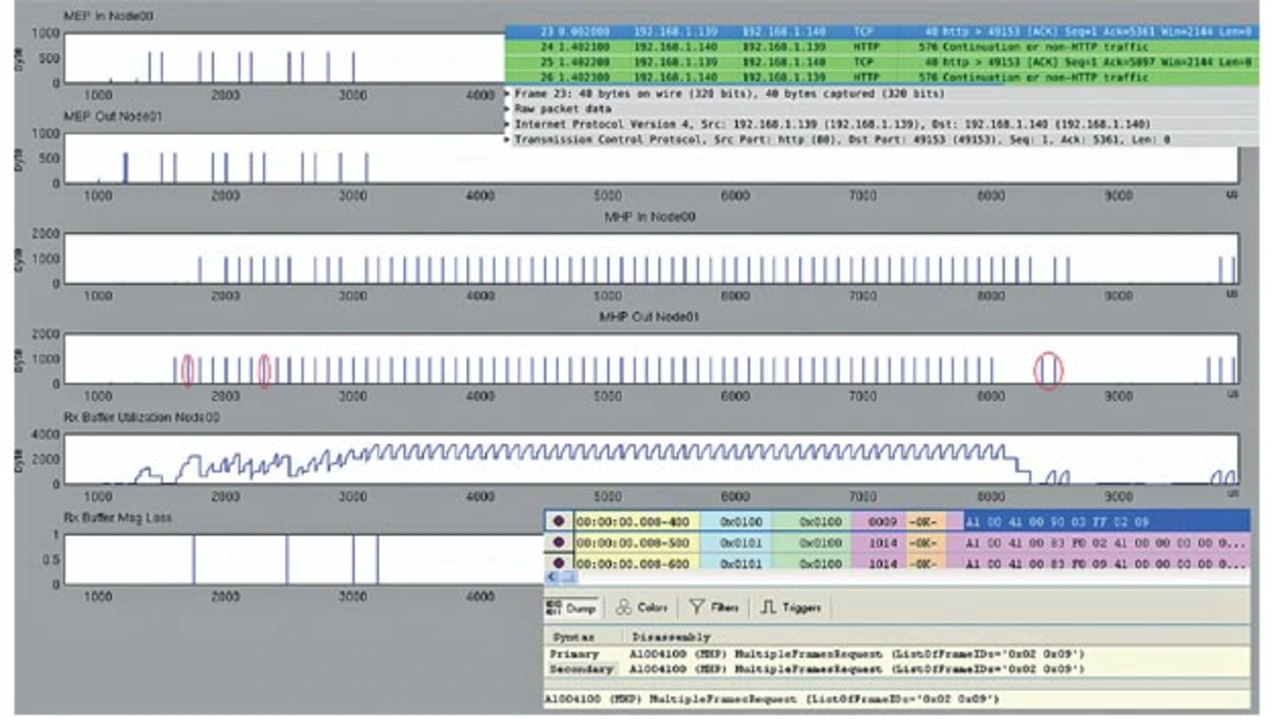MOST Network and System
Virtual Prototypes – Evaluation Framework for MOST-based ADAS
Fortsetzung des Artikels von Teil 4
Evaluation of packet channel sharing applications
A huge potential of virtual prototyping is the analysis of data traffic that depends on a variety of parameters. The evaluation framework allows capturing, monitoring, comparing and analysing the data at the different junctions, for instance, the data sent and received by applications, the data handlers, the different types of buffers or the data on the MOST bus itself. The data access points can easily be defined by the user in the configuration file. This allows the user to analyse the entire system behaviour.
In the following use case, the behaviour of two applications sharing the same packet channel is analysed. In the TSR scenario, the clipped images are transferred over the packet channel because no constant bandwidth allocation is necessary. In this scenario the influence of additional connections is evaluated. The first connection is based on the MOST High Protocol (MHP) while the second one is based on TCP/IP over the MOST Ethernet Protocol (MEP). Both protocols are implemented by encapsulating the original protocols – MHP from the NetServices and TCP/IP from the open source lwIP - Lightweight TCP/IP stack.
Jobangebote+ passend zum Thema

In Figure 3 you can see an extract of the generated tracing data for a one sender and one receiver scenario. The bottom graph shows four buffer overflows in the shared receive buffer. The last but two graph shows the buffer utilisation in bytes. The two graphs in the middle show the data sent e.g. by the Circle Detection, (MHPOutNode01) and the data received e.g. by the receiver HMI (MHPInNode00), respectively. The two messages marked with red circles, are lost due to buffer overflow, and MHP retransmits the data at the end of the block. To verify the correctness of the behaviour, MHP traffic trace can additionally be viewed with the OptoLyzer tool suite. MHP sends a MultipleFrameRequest for retransmission of frames 0x02 and 0x09. The top two graphs show the data exchange from the MEP communication. To analyse these communications, the open source packet analyser Wireshark is used. In this use case scenario the TCP/IP retransmission time-out which was triggered by a frame loss due to the third buffer overflow, is long enough to allow the MHP connection to transmit one complete data set. This short example has demonstrated how the evaluation framework can be used to give a detailed insight into system behaviour. With the link to existing analysis tools, a complete integration of the virtual prototyping approach is accomplished.
- Virtual Prototypes – Evaluation Framework for MOST-based ADAS
- Evaluation Framework – Use Case ADAS
- Impact of communication technology on the application
- Optimization of system parameters
- Evaluation of packet channel sharing applications
- The authors
- The authors